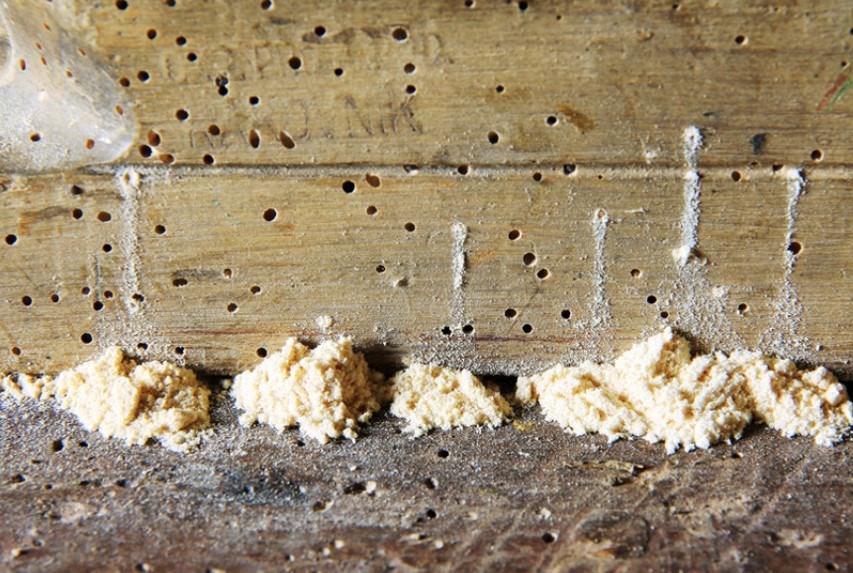Maple, ash, oak, and pine you are not safe. Damage wooden furniture and wet or rotting wooden structures are the main target of this species of wood-boring insect. Unlike other wood damaging insects these critter leave behind a trail of fine wood sawdust. Although they are very strong flying pests, they are usually introduced to your house in infested wood or wood structure, such as studs, joists, rafters, floors, as well as finished wood products. They overwinter in wood and are largely inactive most of the year yet hot weather in the spring and summer draws adult beetles out to mate. The real issue with powderpost beetles is that the eggs are layed in pores and tiny cracks and crevices in the surface of wood, and then the larvae feed on wood for two to twelve months turning it to sawdust-like powder. They exit from the wood as adults leaving small round holes (1 to 3 mm in size) and generally live for two to five weeks. They typically re-infest the same wood by laying their eggs on the surface again, and the cycle continues; each time more exit holes and further boring can eventually cause aesthetic damage (riddled with holes), structural failure and total destruction over time. Kiln dried wood used in the construction of our homes has to be dried to 19 per cent to receive a KD stamp yet the Powderpost beetles require the moisture level of wood to be above 12% therefore these pin head boring creatures can be anywhere. If the infestations are a single object or a small area then removing it can eliminate the problem. If exit holes continue to appear in other areas, then wood preservatives that contain borates are required to kill the larvae dwelling inside.


